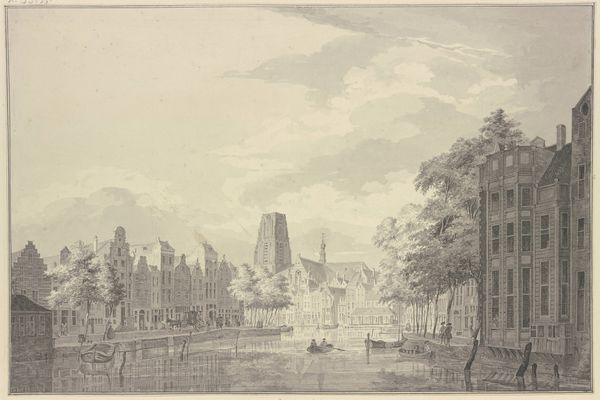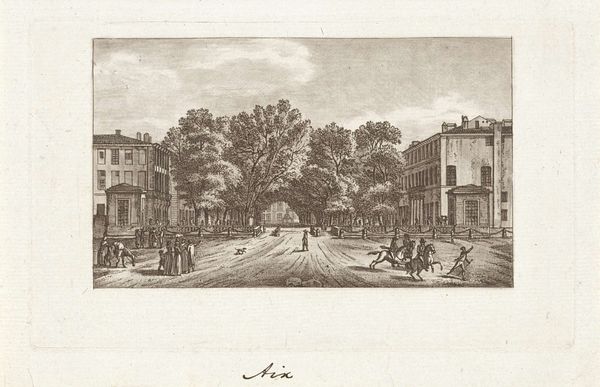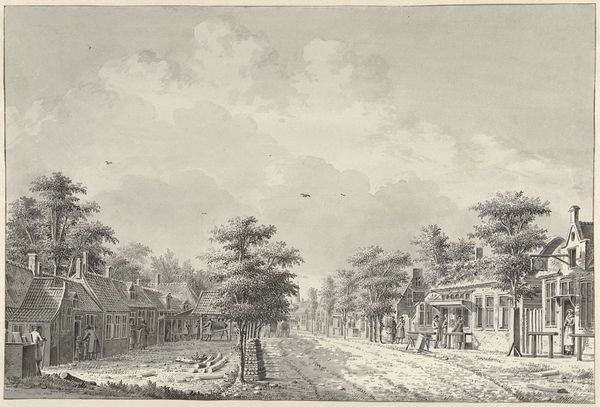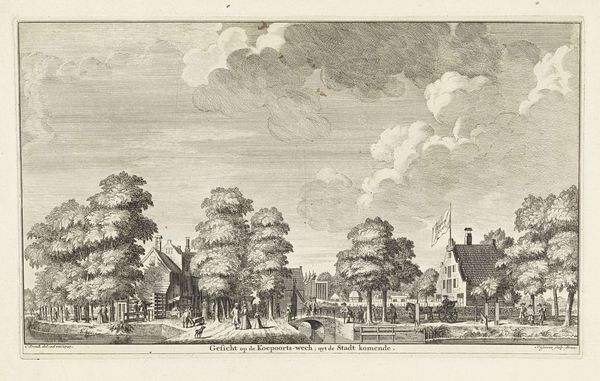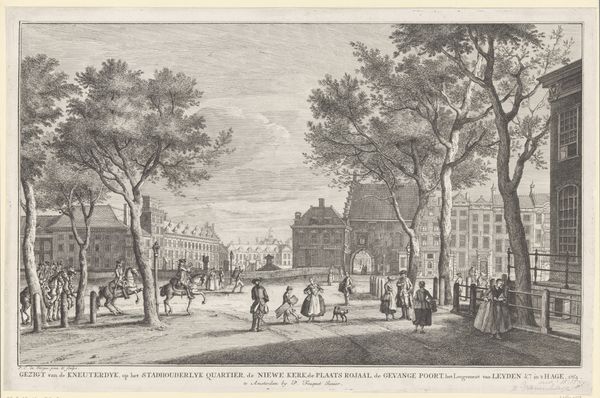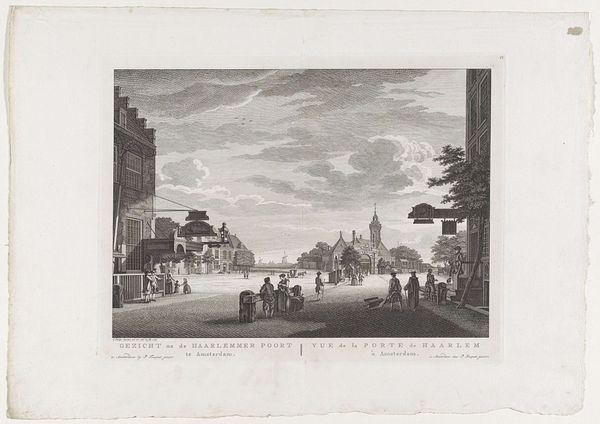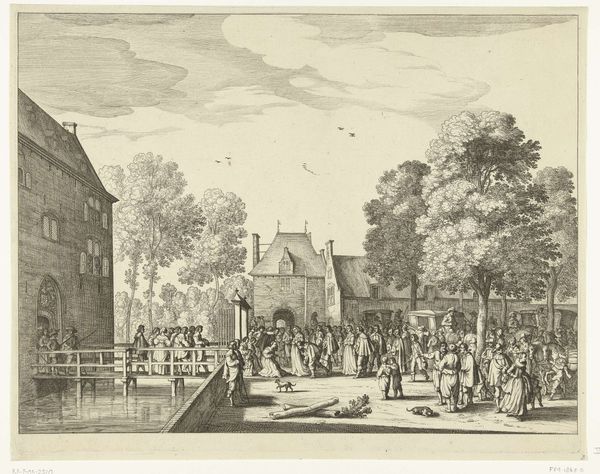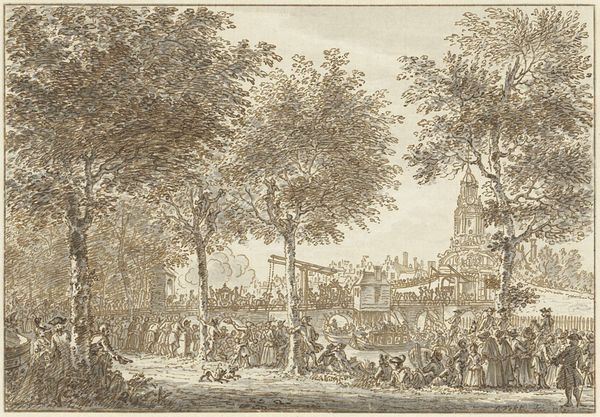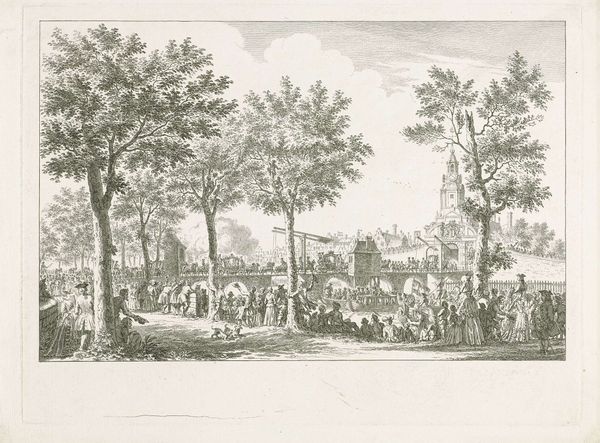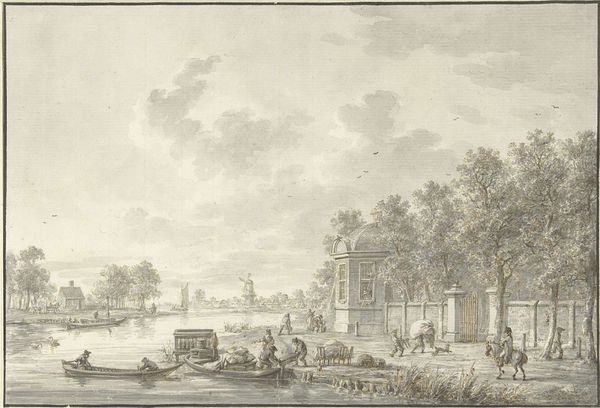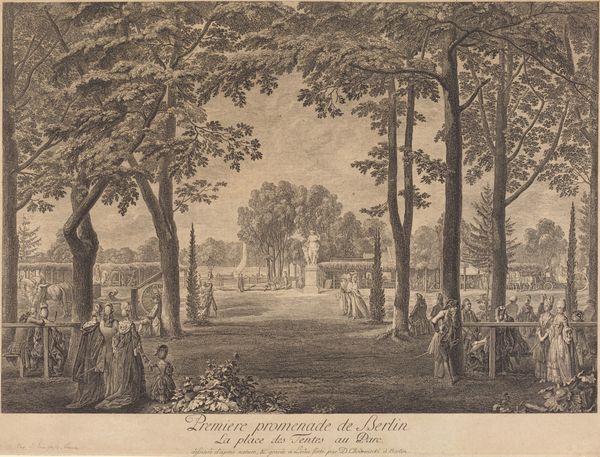
Ruïnen op het Rapenburg te Leiden, na de Buskruitramp van 12 januari 1807 1807
0:00
0:00
drawing, ink
#
drawing
#
landscape
#
ink
#
romanticism
#
cityscape
Dimensions: height 410 mm, width 576 mm, height 339 mm, width 502 mm
Copyright: Rijks Museum: Open Domain
Curator: Here we have Leendert Overbeek’s 1807 ink drawing, "Ruïnen op het Rapenburg te Leiden, na de Buskruitramp van 12 januari 1807," which translates to "Ruins on the Rapenburg in Leiden, after the Gunpowder Disaster of January 12, 1807." It's quite evocative, isn’t it? Editor: Indeed. There’s a palpable stillness amidst devastation. The muted tones emphasize the stark reality of destruction. I wonder about the social context in which Overbeek created this drawing; what drove the production of such imagery in the wake of disaster? Curator: The romanticism seeps through. Notice the bare trees reaching up against a clouded sky; symbols of grief are subtly placed within the scene. The ruin is obviously symbolic of the destruction, but the figures viewing the damage are key here. Editor: Precisely! Their attire and postures – a mix of observation and communal grief – speak to a shared trauma. We also see that Overbeek focuses on the mode of presentation itself; ink as the chosen medium and its availability speak to the process of documenting public catastrophe. Curator: The symbolism runs deeper still. The bridge, partially intact, is a link between the past and a hopefully rebuilt future, while the waterway continues to flow signifying continuity. One has to wonder about the psychological impact this scene would have on viewers in 1807 and even on us, viewing it now. Editor: The very act of drawing is itself a statement. The material evidence left of disaster becomes repurposed as a means to reflect the labor inherent in survival and reconstruction; it provides us, the viewers, a visual account. The lines of communication between people here seem strong, don't they? Curator: They are. Looking closely, I think this work offers more than documentation; it provides solace. Overbeek emphasizes that though physical structures may fall, the social fabric, though torn, persists. Editor: Absolutely. And reflecting on Overbeek’s materials and means, it's impossible not to see the power of this visual representation of catastrophe, one made by everyday resources for a specific end: making visible how the process of labor continues even during dark times. Curator: It leaves one with a sense of resilience, a poignant reminder of how communities come together. Editor: Agreed, this piece is quite impactful from a production perspective; the work done to present loss in such detail and emotion is truly impressive.
Comments
No comments
Be the first to comment and join the conversation on the ultimate creative platform.
